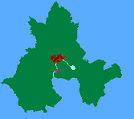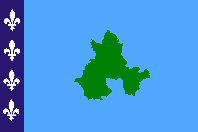Hochberg
| |||
| National motto: "Something witty in latin" | |||
| National anthem: "To be decided" | |||

| |||
| Region | Tethys Continent | ||
| Capital City | Talstadt | ||
| Largest City | Flußdorf | ||
| Population | 5,000,000 | ||
| Suffrage | Universal (16+) | ||
| Official Language(s) | English German | ||
| Government Head of State
Head of Government |
Parliamentary Republic President Prime Minister | ||
| ISO Nation Code | HBRG | ||
| Currency | Hochmark (HMK)
| ||
| Time Zone • Summer (DST) |
GMT -1100 +0100 | ||
| Internet TLD | .hb | ||
| Calling Code | +271
| ||
| National Symbols • Sport • Animal • Fruit • Flower |
Rugby Brown Bear Apple Hochen Rose | ||
| UN Status | Member | ||
| Info: NationStates NSEconomy Pipian XML | |||
Contents
Introduction
The Republic of Hochberg is a small island nation situated on the edge of the Tethys Continent. Renowned for its freedoms, the Republic of Hochberg is one of the most-established Constitutional Monarchies in existence - the current Parliamentary system dating back to the early 17th Centry CE. It is currently undergoing a period of massive and rapid expansion, fueled by the business-friendly policies currently favoured by the Government.
History
Discovery of Hochberginsel
The Island of Hochberg (Deutsch: Hochberginsel) was discovered by pure chance by the Adler, one of a relatively tiny number of ocean-going Carrack vessels originating from the Northern Germanic province of Schleswig-Holstein. The Adler, originally dispatched on an expedition to Iceland, became lost in a storm and blown off course during a particularly fierce Atlantic storm.
Upon the morning, with the compass destroyed and the ship barely intact, the Adler's crew and her captain feared an inevitable death. Close to giving up hope, the crew could barely believe their own eyes when they spotted the high peak of what is now known as Salvation Mountain (Deutsch: Rettberg). Anchoring in Harbour Bay (Deutsch: Hafenbucht), they set about repairing their ship and exploring the uninhabited island.
After a number of months, the Adler was ready to return to Schleswig - many of the crew, however, had little wish to return, having found 'Paradise on Earth'. These few men were left behind with a few tools and materials, and became the first permanent settlers of the island.
Upon returning to land, Captain Lindemann was laughed at for his suggestion that there was an undiscovered island in the Atlantic. The Spanish or the Portugese would have already claimed any such island - the man was delusional. Not everyone disbelieved him, however. Slowly he gathered a small following of believers; the idea of Paradise making many a man willing to uproot his family and follow Lindemann on an expedition back to the island.
The establishment of the Colony
Two years after his return to Germany, Lindemann set sail again. This time he led a small pilgrimage of less than three hundred people from all walks of life - laywers, doctors, builders, merchants and farmers. These people were nothing alike, save for a common belief in Lindemann and the Island of the Tall Mountain, as he called it, or the Hochberginsel.
Arriving in the year 1654, the 'colonists' set about scouring the land in an attempt to find an ideal site for a permanent settlement. Moving further inland than any previous settlement, they sailed up the Waldfluß tp

